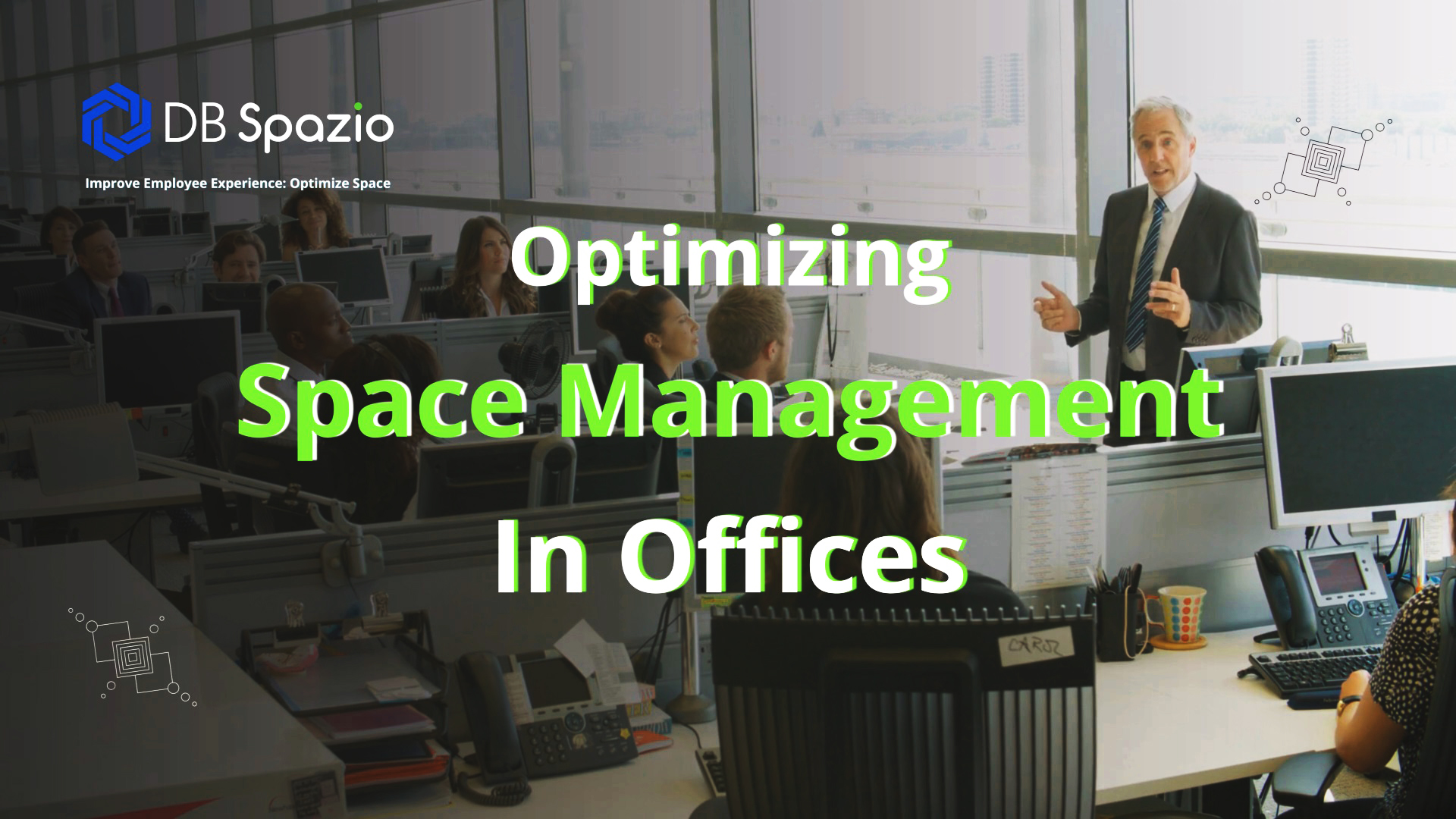In the ever-evolving landscape of office space management, we find ourselves at a crossroads of distinct priorities. Employers across the board are increasingly eager to have their employees return to the office, emphasizing the value of in-person collaboration, innovation, and the preservation of company culture. A whopping 90% of companies surveyed by Resume Builder plan to return to office by 2024.
However, the reality is that many employees are not fully following this mandate, seeking the flexibility, autonomy and work-life balance. As a result, the hybrid work arrangement has emerged as a preferred model, offering the best of both worlds – a harmonious balance between in-office engagement and the freedom to work remotely. According to McKinsey, 87% of employees want to work in a flexible environment that allows for work in an office setting as well as virtually.
Need for Space Management
However, this new hybrid work approach presents a unique challenge. The flexibility offered to employees to choose when and where they work has resulted in unpredictable office attendance patterns. On some days, like Wednesdays, offices are bustling with activity, while on others, like Fridays, they can be practically deserted. Unlike the more predictable attendance of the past, this new dynamic poses a significant challenge for facility teams. They must now navigate these fluctuating patterns, ensuring seamless employee experience while optimizing the utilization of organizational resources.
In a hybrid work environment, employee needs are as diverse as the patterns of office attendance. Some employees require dedicated seats, while others prioritize collaborative spaces for their in-office work. Some employees are fine with hot desking but need autonomy while some rely on their managers to assign their schedules. These varied requirements demand a flexible and intelligent approach to resource planning.
This is precisely where the value of space management becomes evident. It acts as a remedy for the problems businesses face as they embrace the hybrid work structure, offering a systematic and efficient way to strike a balance between employee preferences and the organizational need for resource optimization.
Space Management in Office: Strategies
In crafting an effective space management strategy, every enterprise should tailor its approach to align with its specific goals and priorities. While the finer details may differ from one organization to another, we’ve identified core strategies that encapsulate the key objectives of space management. Let’s explore each of these strategies, all with the goal of “unlocking every inch” of potential within your hybrid workplace.
1. Workplace Flexibility Aligned to Business Needs
Flexible work model is pivotal for the success of hybrid work culture. This strategy involves creating a dynamic work environment that seamlessly accommodates both in-office and remote work. It entails establishing clear policies, technology infrastructure, and collaboration tools that empower employees to excel regardless of their physical location. Furthermore, effective space planning ensures that workplaces are thoughtfully designed to meet the varying needs of the workforce. This planning can be tailored to employee or departmental requirements, considering factors like functional need of on-premise work, security or privacy policies, collaboration or innovation needs, which continually evolve in today’s dynamic work landscape.
2. Office Real Estate Optimization:
This approach involves meticulously assessing the organization’s real estate portfolio to determine which spaces are essential, which can be consolidated, and which can be repurposed. It often requires space utilization metrics to make informed decisions, which may lead to changing layouts to fulfil business needs, rightsizing office locations and revaluating lease agreements. By optimizing real estate, companies can significantly reduce costs while maintaining an efficient and productive workspace. Maximizing real estate assets utilization is not only a cost-effective strategy but also an environmentally responsible one. By taking employee and business needs into consideration, the overall workplace experience goes up, elevating value that employees derive when they visit office.
3. Redesigning for Productive Workplace:
The hybrid nature of work requires thoughtful redesign of the physical workplace. The primary aim of modern workplaces is to foster social interaction and collaboration. Consequently, this strategy emphasizes the reconfiguration of current office spaces and furniture to establish versatile and collaborative workspaces that cater to the well-being and needs of employees. It often includes open-plan layouts, flexible seating arrangements, and dedicated areas for various work styles, such as quiet zones and collaborative spaces. Ergonomic considerations and sustainable design principles play a significant role in this transformation. A well-designed workplace integrates audio visual technology to ensure that remote workers can collaborate with those in office seamlessly. A well designed office not only enhances productivity but also helps employees to visit their offices more often.
4. Keep Technology Integrated
Integrating smart technology into the workspace is becoming increasingly essential for space efficiency as well as elevating employee experience and well-being. This strategy revolves around deploying tools and systems that streamline space utilization, reservation, and allocation. Utilizing IoT sensors and data analytics, companies can gain insights into real-time space usage, enabling more informed decision-making. Additionally, advanced scheduling software can enhance employee experience by simplifying booking processes and ensuring that they have access to the resources they need, increasing productivity. Digital screens integrated with collaboration tools play an important role in unifying experience of the employees irrespective of their location. Integrated tool such as DB Spazio offers a full suite of solution for space management needs of the offices and includes:
- Hybrid Work Scheduler to plan employee schedule effortlessly, eliminating scheduling chaos and frustration
- Meeting Room Management to streamline collaboration amongst employees and help organizations efficiently manage workspace usage
- Desk and Amenities reservation facilitating flexible work arrangements and providing employees with convenient access to resources for enhanced productivity
- Space Planning to simplify space allocation, assignment, and movement on a digitized floor plans for ease of operations and improved space efficiency
- Workplace Analytics to make data-driven workplace decisions through actionable insights
- Energy and Wellness adapter for integration with various facility service components to provide sustainable workplace that promotes wellness
By considering and combining these space management strategies, companies can not only adapt to the evolving nature of work but also create a workspace that is efficient, sustainable, and tailored to the unique requirements of their organization.
Space Management in Office: Benefits & Examples
Effective implementation of space management can yield host of benefits to the organization. The key benefits and how some companies have benefitted from it is listed below.
- Reduced costs
In a hybrid work environment, where not all employees are required to be in the office every day, space management becomes a valuable tool for streamlining your company’s real estate utilization. This can lead to substantial cost savings for your organization. Consider the example of one of our banking clients, who achieved a remarkable 30% improvement in space utilization through space management. You can calculate the return on investment (ROI) for your own space management investment using our personalized calculator. - Efficient Use of Existing Space
Space management tools, using data driven approach, excel in pinpointing areas of underutilized spaces. Such spaces can then be effectively restructured or repurposed into workspaces that enjoy high demand from employees, thereby boosting the overall utilization of your real estate assets. Consider for instance, the challenge of ghost bookings alone, and a 1,000 person office could potentially save $40,000 per annum just by addressing it. - Improved Employee Experience & Productivity
By designing workspaces that align with the evolving needs of employees, we encourage more frequent visits to the office, where they can seamlessly engage in collaborative tasks, brainstorm innovative ideas, or simply find a quiet space for focused work when needed. All these improvements contribute to happier employees, ultimately resulting in a notable boost in productivity. - Sustainability
Optimal space usage can contribute to a reduced environmental footprint, aligning with sustainability and corporate social responsibility goals. BMC Software, one of our clients, just by linking lighting and HVAC system to occupancy schedules could reduce their energy bills in the range of 15%.
Conclusion: Space Management in Office
Space management, as defined in the WORK framework, is a powerful catalyst for modern workplaces. It saves costs, enhances collaboration, and boosts productivity. By using data-driven insights, it identifies underutilized spaces, reconfigures them to meet employee needs, and resolves issues like ghost bookings, resulting in substantial savings. In the ever-changing work landscape, space management is key to optimizing real estate, fostering employee satisfaction, and increasing productivity. It’s about maximizing every inch of space to adapt to the changing workforce and thrive in today’s business world.




